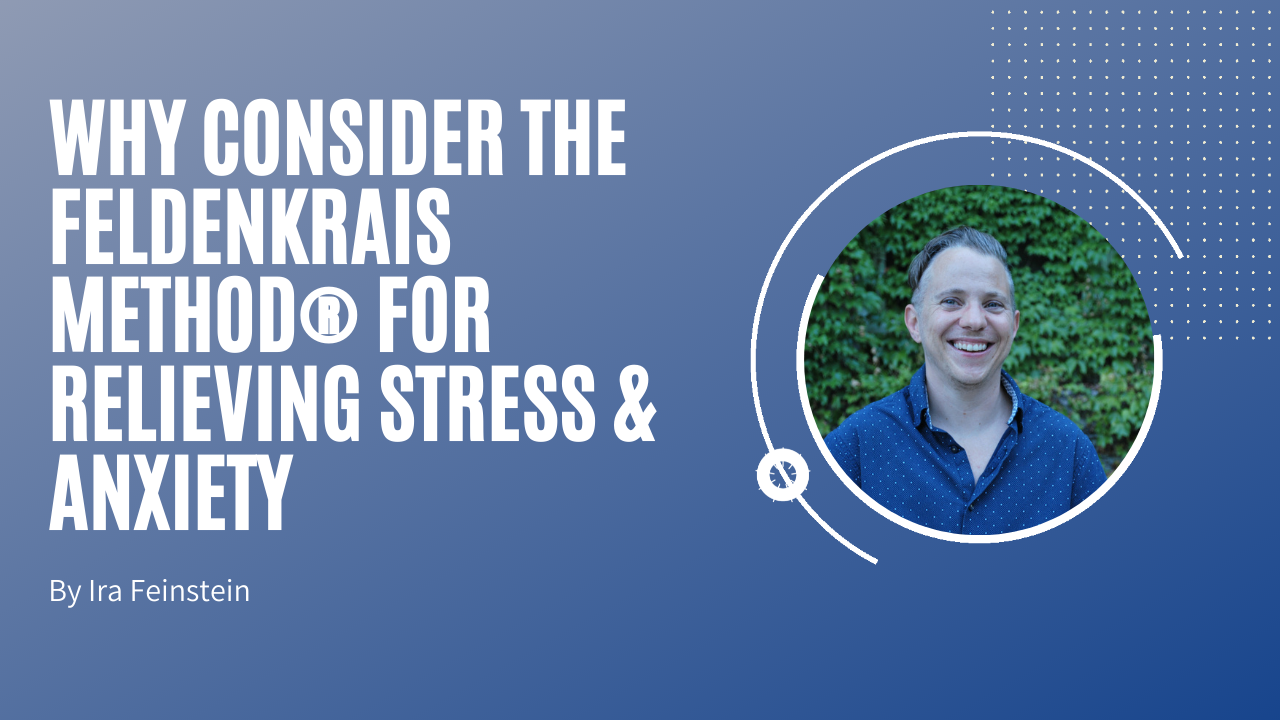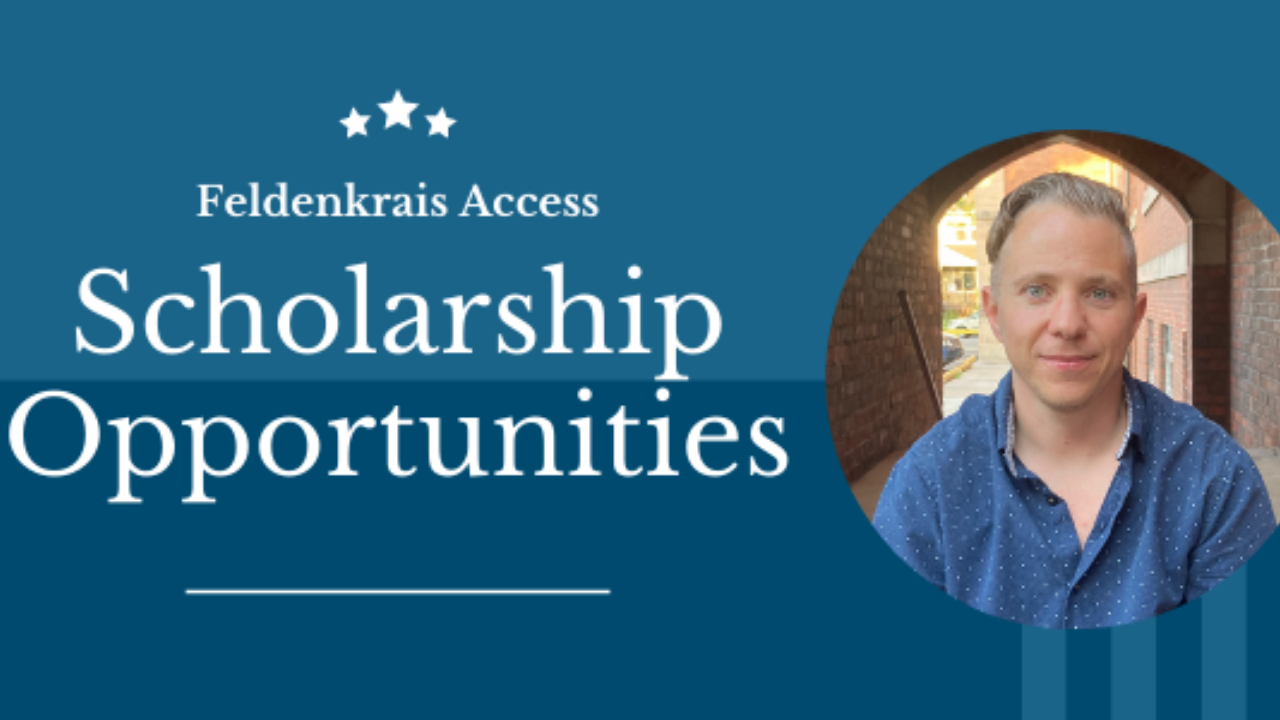Thinking
Feldenkrais
The Importance of Rest in Feldenkrais Lessons

Can We Improve Your Access?

Some Thoughts on Reducing the Body Pattern of Anxiety

Why Consider the Feldenkrais Method for Relieving Stress & Anxiety

Ira Feinstein, Managing Director
The grooves of my anxiety were set at a young age. It was 1987. I was nine years old. My 41-year-old father went to work one morning and never came home. A fatal heart attack. This, alone, would've been traumatic enough if not for my 40-year-old mother's breast cancer diagnosis a year earlier. I spent the next two years until her death waiting to be an orphan. I lived in a state of high alert, always looking for signs that her death was imminent. Every time she failed to greet me at the door after school or was late coming home, I feared the worst. I can still remember the adrenaline pumping through my body and the freezingness of the fear. I couldn't breathe. I couldn't see. The only thing that was real was the sound of my heart thumping erratically in my chest and the refrain, "She's dead, she's dead, she's dead," playing on a loop in my mind.
Even into my early twenties, despite years of therapy and anti-depression medicine, the same wash of fear ...
About Our Scholarship Program

What to Do When the Lesson is Over

As a Feldenkrais Teacher, I often hear: "I feel great after that lesson! How can I make the improvements last and maximize the benefits?" To support the benefits of a lesson, first consider this: Feldenkrais lessons do not end when the movements stop.
For approximately an hour, as we do a Feldenkrais lesson, our brain has an opportunity to sample new options. Old, habitual patterns become flexible, and our brain has a chance to learn something new. New neurological pathways begin to develop, which allow for better posture, easier movement, and better organization. But those new pathways are unfamiliar. If you stand up after doing a Feldenkrais lesson, and immediately start rushing around or grab your cell phone, you will miss the potent minutes--or hours-- when the lesson's effects are the easiest to feel, and the most easily integrated.
Your awareness immediately following a Feldenkrais lesson is very powerful, and helps to ensure the lesson's effectiveness. Give yourself sufficient...
Free! New Online Lessons

- Soothe & Calm: Short Feldenkrais exercises for a healthy nervous system
- Your Restorative Breath
Still Reverberating

Over the last year, a new approach to Functional Integration® has blossomed in my individual work. I call it 'Harmonizing' because that's what it feels like; a dynamic, three-dimensional way of working with a strong undercurrent of joining in action. In the past, I've used this idea at the end of my FI® lessons to help clients integrate their new learning in an upright position. But recently, a new avenue opened up, and I find myself giving entire lessons this way. I was surprised when it started happening; for a moment thought I'd invented something new. But then, I remembered that actually, this approach invented me.
 In 1975, I was a student in the San Francisco Feldenkrais® Professional Training program when, on a Thursday or Friday toward the end of our second month, Moshe invited me to come to the front of the room and sit on the edge of his table. He began to work with me, and as I recall, his goal seemed to be to find an effortless path to bring me from sitting to standing. To ...
In 1975, I was a student in the San Francisco Feldenkrais® Professional Training program when, on a Thursday or Friday toward the end of our second month, Moshe invited me to come to the front of the room and sit on the edge of his table. He began to work with me, and as I recall, his goal seemed to be to find an effortless path to bring me from sitting to standing. To ...
Wholeness vs Segmental Thinking

From a talk given in response to a question during the second year of the New York VIII Feldenkrais Professional Training Program
Transcribed and Edited by Morgan McKenzie Kauffman
It is your ability to turn towards your own sensation that brings another to sense themselves. It is your ability to feel and know yourself in your wholeness, that enables the other person to feel their wholeness and to act in a more integrated way.
A common idea in Western thought production is that knowledge derives from the cutting of things into fragments or pieces. Of course, cutting things into parts can lead to a certain kind of useful knowing, but it’s a different way of thinking than the one I find most useful to us as Feldenkrais Practitioners. It is tempting to think that by “segmentalizing” the self into this muscle or that muscle and focusing on individual parts, we will understand what needs to be fixed or what is relevant to know about a person in order to help them. But in fact, “segm...
Further Thoughts on 'The Teleceptors Organize the Head and Neck'

I recently posted a clip of a short, spontaneous FI demonstration filmed during an advanced training that I taught in England, in September 2019. It was graciously recorded by Feldenkrais Trainer, Raz Ori. In this particular clip, ‘The Teleceptors Organize the Head and Neck,’ the student sits on the table while I stand to work with her. For some of the lesson, her head rests against my chest. This is an extremely versatile and effective approach which allows the practitioner to move freely with a dynamic stability while at the same time being connected to another person in such a way that they feel themselves to be weightless. However, it presents some obvious challenges which I’d like to discuss.
First, I’d like to explain that the participants in this workshop were experienced Practitioners, with the exception of some fourth-year students from the London training program. They understood that we would not be focusing on individual FI skills, but instead on a more general approach of...


